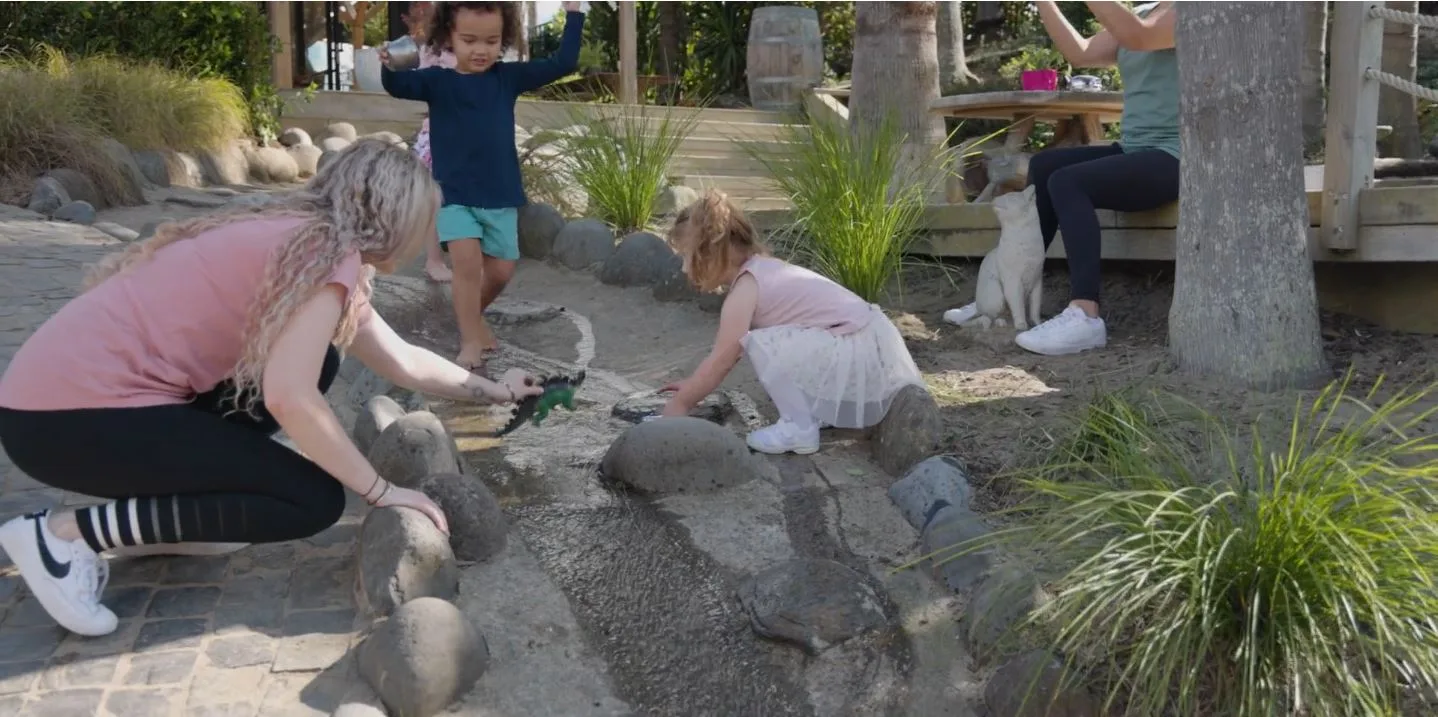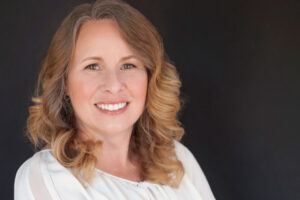Imagine a daycare that not only offers a safe and nurturing environment for children, but also goes above and beyond to create an irresistible experience for both parents and kids. From engaging activities to personalized communication, there are numerous ways to make your daycare an attractive place for parents and kids alike. In this article, we will explore some effective strategies that will not only elevate the reputation of your daycare but also create a sense of excitement and satisfaction among families. So, get ready to transform your daycare into a place that parents and kids will absolutely love!

Creating a Safe and Secure Environment
Establishing a secure entry system
One of the fundamental aspects of creating a safe and secure environment in your daycare is establishing a secure entry system. By implementing measures such as keycard access or requiring visitors to buzz in, you can ensure that only authorized individuals have access to the facility. This provides parents with peace of mind knowing that their children are in a protected environment.
Implementing strict pick-up and drop-off policies
To further enhance the safety of your daycare, it is essential to implement strict pick-up and drop-off policies. This means verifying the identity of individuals who come to pick up the children, ensuring that only authorized persons are allowed to collect them. By maintaining a clear record of authorized individuals, you can prevent unauthorized individuals from gaining access to the children in your care.
Installing surveillance cameras
Installing surveillance cameras throughout your daycare facility is an effective way to increase security and provide additional assurance to parents. Not only do cameras deter potential intruders, but they also allow continuous monitoring of the premises. This allows you to promptly address any safety concerns or incidents that may arise, enhancing the overall security of your daycare.
Conducting thorough background checks on staff
Another crucial aspect of creating a safe environment is conducting thorough background checks on staff. By ensuring that all employees have undergone comprehensive screenings, including criminal background checks, reference checks, and verification of qualifications, you can significantly reduce any potential risks. This instills trust in parents and ensures that their children are in capable and trustworthy hands.
Regular safety inspections
To maintain a safe and secure environment, it is important to conduct regular safety inspections. This involves inspecting the facility for any potential hazards, such as loose wires, broken equipment, or slippery surfaces. By addressing these issues promptly and regularly, you can prevent accidents and maintain a safe environment for children to thrive in.
Fostering a Caring and Nurturing Atmosphere
Hiring qualified and compassionate staff
One of the key factors in creating a caring and nurturing atmosphere in your daycare is hiring qualified and compassionate staff. Look for individuals who not only possess the necessary qualifications and experience but also demonstrate a genuine love for working with children. When staff members have a true passion for their work, they go above and beyond to create a nurturing environment that fosters children’s growth and development.
Promoting positive and respectful communication
Another vital aspect of creating a caring and nurturing atmosphere is promoting positive and respectful communication. Encourage open dialogue among staff, parents, and children, fostering an environment where everyone feels heard and valued. By modeling respectful communication and providing channels for feedback and discussion, you create an atmosphere that supports healthy relationships and emotional well-being.
Encouraging individual attention and personal connections
At your daycare, strive to provide individual attention and foster personal connections with each child. Every child is unique, and by taking the time to understand their needs, interests, and strengths, you can create an environment that nurtures their individual growth. Encourage staff members to form meaningful connections with the children they care for, fostering a sense of belonging and security.
Providing a warm and welcoming environment
Creating a warm and welcoming environment is crucial in establishing a nurturing atmosphere. Pay attention to the physical space of your daycare, ensuring it is clean, well-maintained, and inviting. Consider adding cozy reading nooks, comfortable seating areas, and vibrant artwork to create a visually appealing and comforting environment that children and parents will love.
Creating a sense of belonging
To foster a caring and nurturing atmosphere, it is essential to create a sense of belonging for both children and their families. Celebrate diversity and promote inclusivity by embracing different cultures, traditions, and backgrounds. Encourage children to share their experiences and engage in activities that promote empathy, understanding, and a sense of community. By creating an environment where everyone feels accepted and valued, you nurture a positive and inclusive atmosphere.

Offering a Variety of Educational Activities
Providing age-appropriate learning materials and resources
When it comes to offering a variety of educational activities, it is important to provide age-appropriate learning materials and resources. Tailoring activities to the developmental needs and abilities of each age group ensures that children are engaged, challenged, and stimulated in their learning. From books and puzzles to manipulatives and sensory play materials, providing a diverse range of resources enhances the educational experience for children.
Developing a curriculum that promotes holistic growth
A well-rounded curriculum is essential for promoting holistic growth in children. Incorporate various domains of development, such as cognitive, physical, social, and emotional, into your curriculum. Provide opportunities for children to explore different subjects, engage in hands-on activities, and develop essential skills across various areas of development. By offering a comprehensive curriculum, you support the overall growth and development of each child.
Incorporating hands-on learning experiences
Hands-on learning experiences are highly beneficial for children’s educational journeys. They provide opportunities for children to actively participate, experiment, and explore through their senses. From science experiments and nature walks to cooking and art projects, incorporating hands-on learning experiences allows children to engage with concepts in a meaningful and memorable way, fostering a love for learning.
Promoting creativity through arts and crafts
Creativity is a vital aspect of children’s development, and promoting it through arts and crafts is a wonderful way to enhance their educational experience. Encourage children to express themselves through various art forms, such as painting, drawing, and sculpting. Provide a wide range of art supplies, allowing children to experiment and explore their creativity. By fostering an environment that values and promotes artistic expression, you encourage children to think outside the box and develop essential problem-solving and critical-thinking skills.
Organizing field trips and guest speakers
To enrich children’s learning experiences, organize field trips and invite guest speakers to your daycare. Field trips provide opportunities for children to explore different environments, learn about their community, and engage in hands-on experiences outside of the daycare setting. Similarly, inviting guest speakers, such as local professionals or community members, allows children to learn from individuals with diverse backgrounds and expertise. These experiences broaden children’s horizons and make learning exciting and relevant.
Emphasizing Health and Wellness
Offering nutritious meals and snacks
Emphasizing health and wellness in your daycare starts with offering nutritious meals and snacks. Provide a well-balanced menu that includes a variety of fruits, vegetables, whole grains, and lean proteins. Educate children about the importance of healthy eating habits and involve them in age-appropriate meal preparation activities. By promoting nutritious eating habits, you contribute to their overall well-being and help them develop lifelong healthy habits.
Encouraging regular exercise and outdoor playtime
To support children’s physical development and overall health, it is crucial to encourage regular exercise and outdoor playtime. Designate dedicated outdoor play areas where children can engage in physical activities and explore their surroundings. Incorporate structured physical education programs and age-appropriate exercises into your curriculum. By providing opportunities for active play and movement, you promote physical fitness and encourage children to develop healthy habits.
Promoting hygienic practices and personal cleanliness
Maintaining good hygiene and personal cleanliness is essential for children’s health and well-being. Provide clear guidelines and teach children about the importance of handwashing, brushing their teeth, and personal grooming. Ensure that the daycare environment is equipped with adequate handwashing stations and hygiene supplies. By promoting hygienic practices, you contribute to the prevention of illness and create a healthy environment for children to thrive in.
Providing a calming and relaxing naptime routine
Adequate rest is crucial for children’s overall well-being and development. Establish a calming and relaxing naptime routine that allows children to recharge and rejuvenate. Create a quiet and comfortable space for naptime, providing cozy bedding and soothing music if needed. By prioritizing rest and ensuring a peaceful environment during naptime, you support children’s optimal cognitive and emotional functioning.
Supporting emotional well-being and stress management
Emphasizing health and wellness includes prioritizing children’s emotional well-being. Foster a supportive and emotionally nurturing environment where children feel safe to express their feelings and emotions. Teach children age-appropriate stress management techniques, such as deep breathing exercises or mindfulness activities. Provide opportunities for children to engage in activities that promote emotional regulation, such as yoga or art therapy. By addressing their emotional needs, you contribute to their overall health and well-being.

Maintaining Open and Transparent Communication
Establishing clear policies and procedures
Maintaining open and transparent communication starts with establishing clear policies and procedures. Clearly outline your daycare’s rules, regulations, and expectations for both staff and parents. Ensure that these policies are easily accessible and well-communicated to all stakeholders. By establishing clear guidelines, you promote consistency, transparency, and a shared understanding of the daycare’s values and practices.
Regularly updating parents with newsletters and emails
Effective communication with parents is vital for maintaining open and transparent communication. Regularly update parents with newsletters and emails that share important information, upcoming events, and highlights of children’s learning experiences. This ensures that parents feel involved and connected to their child’s daycare journey. By keeping parents well-informed, you foster a collaborative relationship based on trust and shared responsibility.
Using a reliable and user-friendly communication platform
Utilizing a reliable and user-friendly communication platform further enhances communication between daycare staff and parents. Adopt a platform that allows for seamless messaging, photo sharing, and updates regarding children’s activities and progress. This platform should be easy to navigate and accessible to all parents. By providing a convenient and efficient way for communication, you strengthen the partnership between parents and staff.
Scheduling parent-teacher conferences and progress reports
In addition to regular updates, scheduling parent-teacher conferences and providing progress reports are integral to open and transparent communication. These meetings allow for more in-depth discussions about children’s development, progress, and any concerns that may arise. By providing these opportunities for face-to-face communication, parents feel valued and involved in their child’s daycare journey.
Encouraging feedback and addressing concerns promptly
To maintain open and transparent communication, it is essential to encourage feedback from parents and promptly address any concerns that may arise. Create avenues for parents to share their thoughts, suggestions, and concerns, such as through surveys or suggestion boxes. Actively listen to their feedback and take necessary actions to address their concerns. By fostering a culture of open communication and responsiveness, you create a strong partnership between parents and staff.
Creating an Engaging and Inclusive Social Environment
Organizing regular social events and gatherings
Creating an engaging and inclusive social environment involves organizing regular social events and gatherings. Plan activities such as family picnics, holiday celebrations, or themed parties where children and parents can come together. These events foster a sense of community and provide opportunities for families to connect and build relationships. By organizing social events, you create memorable experiences that strengthen the bond between families and your daycare.
Encouraging parent involvement in daycare activities
Encouraging parent involvement in daycare activities is an excellent way to create an engaging and inclusive social environment. By inviting parents to volunteer, participate in classroom activities, or share their expertise, you provide opportunities for them to actively engage in their child’s learning journey. This involvement helps create a strong sense of community, supports children’s educational experiences, and deepens the connection between parents and your daycare.
Celebrating cultural diversity and promoting inclusivity
Promoting cultural diversity and inclusivity is an integral part of creating an engaging and inclusive social environment. Celebrate and embrace the cultural diversity of your daycare community through special events, activities, and discussions that highlight different cultures and traditions. Encourage children to share their own cultural experiences and educate one another about their unique backgrounds. By creating a space that values diversity, you foster an inclusive environment where everyone feels welcome and appreciated.
Facilitating friendships and teamwork among children
Facilitating friendships and teamwork among children is crucial for creating an engaging and inclusive social environment. Encourage cooperative play, group activities, and projects that promote collaboration and teamwork. Teach children about empathy, kindness, and the importance of respecting one another’s opinions and perspectives. Provide opportunities for children to develop social skills, build friendships, and learn how to effectively communicate and work together.
Promoting respect for differences and conflict resolution skills
Promoting respect for differences and conflict resolution skills is essential for creating an inclusive social environment. Teach children the importance of respecting and embracing differences in appearance, abilities, and beliefs. Provide guidance and strategies for resolving conflicts in a peaceful and respectful manner. By emphasizing these values and skills, you create an environment where diversity is celebrated, and conflicts are resolved constructively.
Ensuring a Well-Maintained and Clean Facility
Establishing a regular cleaning schedule
Ensuring a well-maintained and clean facility starts with establishing a regular cleaning schedule. Develop a comprehensive plan for daily, weekly, and monthly cleaning tasks, ensuring that all areas of the facility are thoroughly cleaned and maintained. This includes cleaning play areas, sanitizing toys, and disinfecting surfaces. By adhering to a regular cleaning schedule, you create a hygienic and safe environment for children.
Keeping the daycare environment clutter-free and organized
Maintaining a clutter-free and organized environment is essential for the well-being and safety of children. Regularly declutter all areas of the daycare and organize materials and equipment to ensure easy accessibility. Implement storage solutions that promote organization, such as labeled bins or shelves. By keeping the daycare environment tidy and organized, you create a visually appealing and functional space that enhances children’s learning experiences.
Maintaining well-functioning and safe equipment
Regular maintenance of equipment is crucial for ensuring a safe and well-functioning daycare environment. Conduct routine inspections of all equipment, including playground structures, furniture, and educational materials, to identify any potential hazards or signs of wear and tear. Promptly repair or replace damaged equipment to prevent accidents or injuries. By prioritizing equipment maintenance, you create a safe environment that promotes children’s well-being.
Regularly inspecting and updating play areas
Regular inspection and updating of play areas are essential for maintaining a well-maintained daycare facility. Check play areas regularly for any potential safety hazards, such as loose or broken equipment, sharp edges, or trip hazards. Make necessary repairs or replacements promptly to ensure the safety of children. Additionally, regularly update play areas with new and engaging materials to keep children excited and motivated in their play.
Ensuring proper hygiene and cleanliness
In addition to regular cleaning, ensuring proper hygiene and cleanliness throughout the daycare facility is essential. Provide hand sanitizing stations in key areas, such as entrances and play areas, and teach children proper handwashing techniques. Regularly sanitize toys, surfaces, and high-touch areas to prevent the spread of germs. By prioritizing hygiene and cleanliness, you create a healthy and safe environment for children to learn and thrive.
Providing Flexible and Convenient Services
Offering extended operating hours and flexible schedules
Providing flexibility in operating hours and schedules is a significant advantage for parents seeking daycare services. Consider offering extended operating hours to accommodate parents with demanding work schedules. Additionally, providing flexible scheduling options, such as part-time or drop-in arrangements, allows parents to tailor daycare services to their specific needs. By offering flexible and convenient services, you attract a wider range of parents who require customized childcare solutions.
Providing affordable options and payment plans
Affordability is a crucial consideration for many parents when selecting a daycare provider. Offer various pricing options to accommodate different budgets and ensure that your daycare services are accessible to a wide range of families. Consider implementing payment plans or offering discounts for siblings to further support families in managing childcare expenses. By providing affordable options and flexible payment plans, you make your daycare more accessible and appealing to parents.
Scheduling extra-curricular activities and enrichment programs
To enhance the educational experience and attract parents seeking comprehensive childcare options, offer extra-curricular activities and enrichment programs. These may include music lessons, language classes, or sports programs. By providing a variety of activities, you strengthen the overall educational experience for children and offer parents additional value and convenience in their childcare arrangements.
Arranging transportation services if needed
For parents who may require transportation services, consider offering this as an additional convenience. Arrange transportation options, such as school bus services or shuttle services, to pick up and drop off children. This relieves parents of the responsibility of transportation, making your daycare more attractive to families with busy schedules or limited transportation options.
Ensuring convenient and accessible location
When choosing a daycare, parents often consider proximity and accessibility. Ensure that your daycare is conveniently located, with good access to public transportation or major roads. Provide ample parking spaces for parents who prefer to drop off and pick up their children personally. By offering a convenient and accessible location, you make it easier for parents to choose your daycare as their preferred childcare provider.
Creating a Positive Reputation and Credibility
Maintaining a high standard of professionalism
To create a positive reputation and establish credibility, it is important to maintain a high standard of professionalism in your daycare. This includes professional conduct from staff, clear and concise communication, and adherence to ethical standards. By consistently demonstrating professionalism in all aspects of your daycare’s operations, you build trust and instill confidence in parents.
Obtaining certifications and accreditations
Obtaining certifications and accreditations is an effective way to showcase the quality and credibility of your daycare. Seek certifications from recognized early childhood education organizations or accreditation bodies that evaluate and validate the quality of your programs and services. Display these certifications prominently to demonstrate your commitment to maintaining high standards and meeting industry benchmarks.
Building strong relationships with local organizations and resources
Building strong relationships with local organizations and resources can greatly enhance your daycare’s reputation. Collaborate with community partners, such as schools, libraries, or healthcare providers, to organize joint events, share resources, or provide additional support to parents and children. By establishing these partnerships, you position your daycare as an active and valued member of the community.
Establishing partnerships with trusted professionals and experts
Establishing partnerships with trusted professionals and experts further enhances your daycare’s reputation and credibility. Collaborate with early childhood education specialists, child psychologists, or pediatricians to provide additional support, training, or resources for parents and staff. By leveraging the expertise of these professionals, you demonstrate your dedication to providing the best possible care and education for children.
Showcasing success stories and positive testimonials
Showcasing success stories and positive testimonials from satisfied parents is an effective way to build a positive reputation. Share success stories of children who have flourished under your care and highlight specific accomplishments or milestones. Additionally, request testimonials from parents and display them on your website or in promotional materials. By sharing these stories and testimonials, you provide evidence of your daycare’s positive impact and success.
Continuous Improvement and Professional Development
Investing in staff training and development programs
Investing in staff training and development programs is essential for continuous improvement in your daycare. Offer ongoing professional development opportunities for staff, including workshops, seminars, or courses that focus on current best practices in early childhood education. By equipping your staff with the latest knowledge and skills, you ensure a high quality of care and education for children.
Staying up-to-date with the latest educational approaches and research
Staying up-to-date with the latest educational approaches and research is crucial for continuous improvement in your daycare. Regularly review and adapt your curriculum based on current research and emerging best practices. Keep abreast of advancements in early childhood education by attending conferences, joining professional networks, and subscribing to reputable educational publications. By staying informed, you provide children with the most effective and innovative educational experiences.
Conducting regular evaluations and assessments
Regular evaluations and assessments are vital for identifying strengths and areas for improvement in your daycare. Conduct internal evaluations, such as self-assessments or peer evaluations, to review and reflect on your daycare’s performance. Additionally, gather feedback from parents through surveys or focus groups to gain valuable insights into their experiences and satisfaction levels. By consistently evaluating and assessing your daycare’s operations, you can identify areas for growth and make necessary adjustments.
Implementing suggestions and feedback from parents and staff
Creating a culture of continuous improvement involves valuing and implementing suggestions and feedback from parents and staff. Actively seek input and ideas from both parents and staff, encouraging them to share their perspectives and suggestions for improvement. Evaluate these suggestions and implement changes as appropriate. By involving all stakeholders in the improvement process, you create a collaborative and innovative environment that enhances the quality of your daycare.
Embracing a culture of continuous improvement
Ultimately, continuous improvement should be ingrained in the culture of your daycare. Foster a culture that embraces learning, growth, and adaptability. Encourage staff to pursue professional development opportunities and share their knowledge and expertise with others. Celebrate achievements and milestones, and regularly reflect on your daycare’s progress. By continually striving for excellence and embracing a culture of continuous improvement, you ensure that your daycare remains a vibrant and dynamic learning environment.


